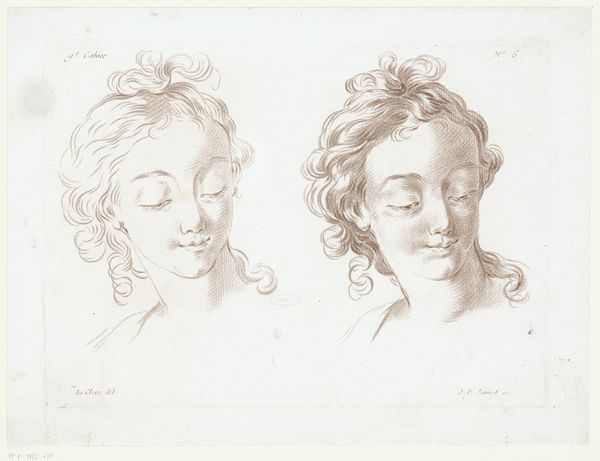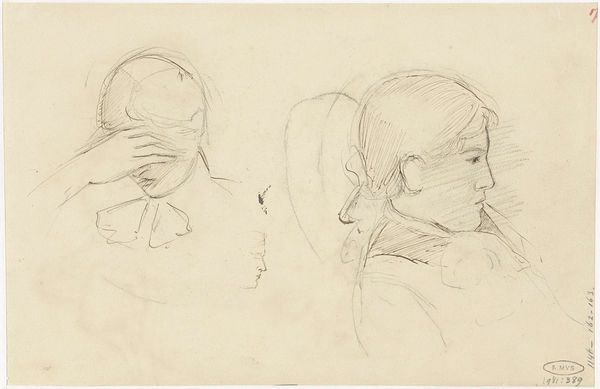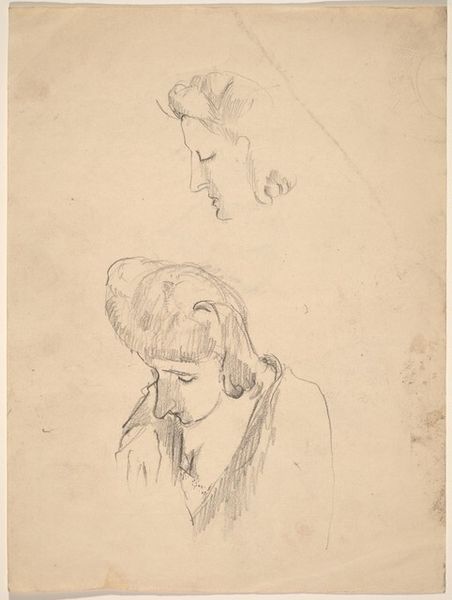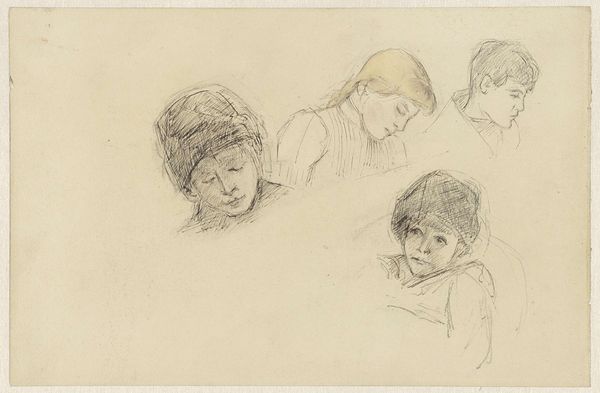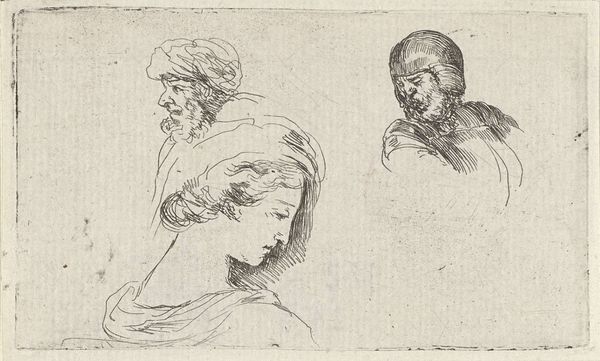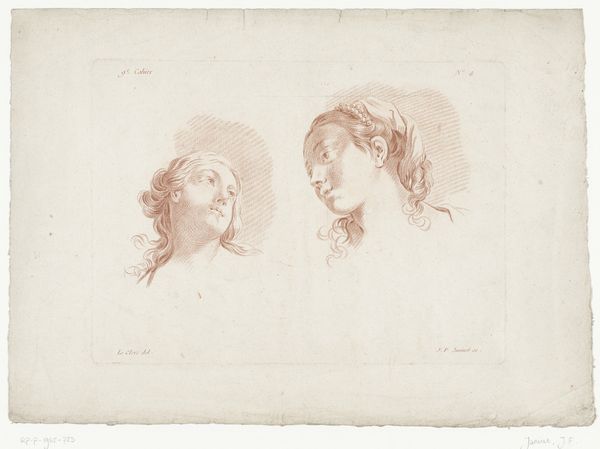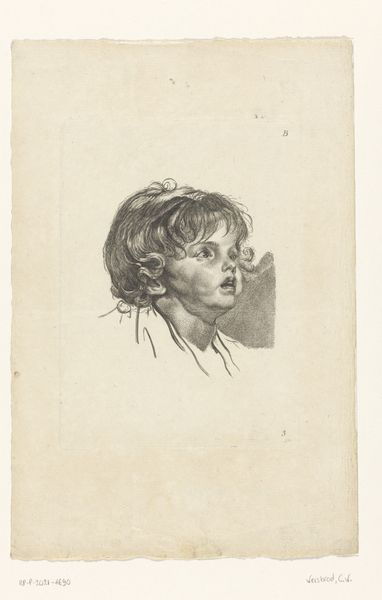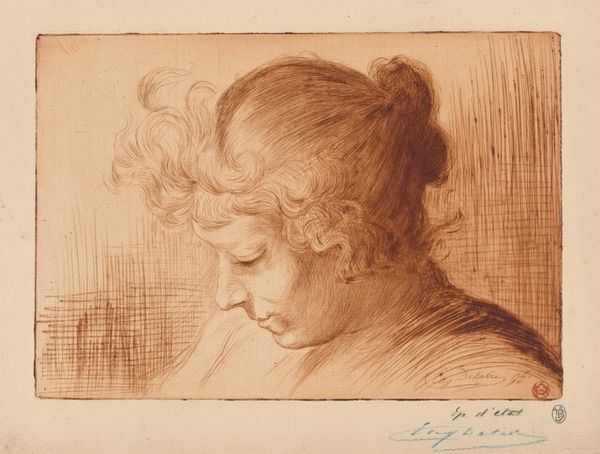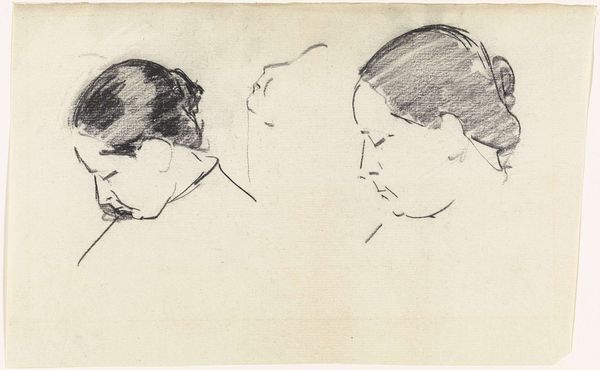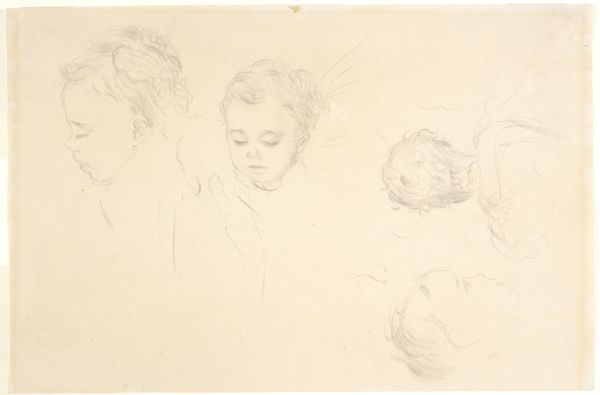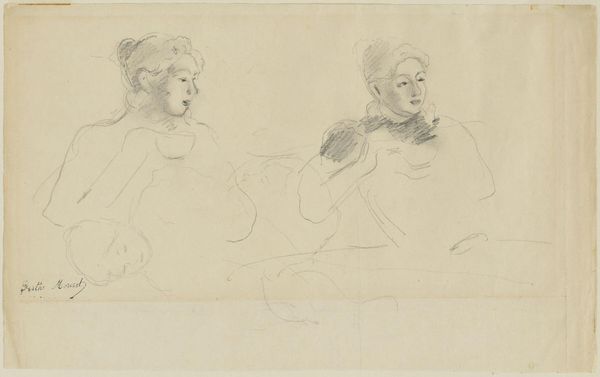
drawing, paper, pencil
#
portrait
#
drawing
#
amateur sketch
#
imaginative character sketch
#
facial expression drawing
#
light pencil work
#
pencil sketch
#
figuration
#
paper
#
personal sketchbook
#
portrait reference
#
idea generation sketch
#
child
#
pencil
#
line
#
portrait drawing
#
pencil work
#
northern-renaissance
#
realism
Dimensions: height 168 mm, width 238 mm
Copyright: Rijks Museum: Open Domain
Editor: This is "Studie van de kop van een kind dat neerkijkt," or "Study of the head of a child looking down," from between 1675 and 1711. It's a pencil drawing on paper. I find it incredibly intimate, like we're peeking into a very private moment. What's your interpretation? Curator: That sense of intimacy is powerful. I think we have to consider the role of childhood in 17th and 18th-century European society. Children, often seen as miniature adults, were frequently subjects in art, but rarely portrayed with this level of quiet introspection. Editor: Introspection... that’s interesting. Why is that significant? Curator: It signals a shift in how children were perceived. Could this drawing be subtly critiquing the societal pressures placed on children to conform? Were they allowed a private, internal life? Or even the expectation of embodying adulthood prematurely? This may be an argument that children are individual thinking humans and should be recognised as so. Editor: That's a perspective I hadn't considered. It makes me think about the gaze of the artist. Do you see this as an empathetic observation, or something else? Curator: I'd lean toward empathetic. Look at the soft lines, the gentle shading, especially around the eyes. It speaks to a tenderness, a deliberate choice to capture the vulnerability inherent in childhood. It seems less about mastery or control, and more about understanding the internal experience. But does the lack of a known artist shift the empathy to something else, for you? Editor: Definitely. If we don't know the artist, and whether the drawing was ever actually seen by others, that just pushes that quiet introspection more into the realm of personal emotion. This drawing then becomes a document in itself, outside of our judgement as art viewers, or, dare I say, art critics. Thank you for pointing that out. Curator: Exactly. Art gives such interesting and challenging things to consider.
Comments
No comments
Be the first to comment and join the conversation on the ultimate creative platform.

